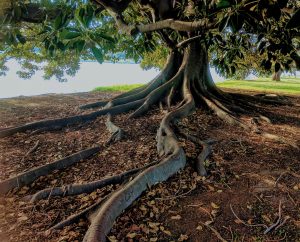Trees are a very important component of the environment. They provide us with some of life’s basic needs such as Oxygen and food Additionally, trees preserve soil, purify the air by absorbing excess CO2 from the atmosphere just to mention a few. Although trees are not as good as it is told to be, like many things in life it brings in a set of problems along with its own advantages. One common problem is the invasive nature of some tree roots which get in the drains. As technology continues to advance people seem to be getting a better understanding of the potential that trees have. Products as unique as sponges, hair dye, chewing gum, or a cigar box, all come from trees.
In various parts of the world, people use trees as a source of energy. And as the years go by researchers and scientists continue to figure out new ways to harness and use the energy produced by trees. The use of trees as a source of energy may differ from one geographical region to another. Here are some of the ways in which trees can be used to produce energy.
Wood Fuel
This is probably one of the commonly used forms of energy. There are different types of wood fuel and each can be used depending on the task at hand. Firewood and charcoal top the list in this category. There are a lot of advantages that one can get from using firewood as a source of energy. One is that firewood is readily available and is also very easy to use. It is also cheap compared to other forms of energy given that it does not require any type of processing. Firewood can be used in cooking and can also produce heat to keep the house warm.
Charcoal, on the other hand, may require a bit of processing which involves burning wood in the absence of oxygen. Through this, the moisture from the wood will be removed and additional volatile materials may also burn out in the process. The resulting compound will be a black mass of carbon residue called charcoal. Compared to wood, charcoal burns at a faster rate and produces more heat due to the absence of moisture. It also produces less smoke making it friendly to cooking equipment.
Both forms of energy can be obtained from trees and in most cases have been used to produce other types of energy such as steam energy. Wood and charcoal can be used to boil water at very high temperatures causing the water to evaporate. As the water evaporates pressure is created in the steam chamber. This pressure can be used to generate mechanical energy which can power steam engines used in locomotives such as trains.

Gasification and Combustion of Wood Biomass
Biomass from trees such as sawdust, chips, and pellets can also be used in the production of electricity. This can be done through gasification or combustion. When biomass is gasified, it produces a combustible gas that can be burnt to produce heat energy used in cooking. A good number of countries rely on biomass obtained from trees in the production of electricity. This is done by directly combusting the biomass which then heats up boilers resulting in steam energy. The energy is then directed to steam turbines which rotate at very high speeds generating electricity.
Using biomass may be beneficial but care should be taken in its acquisition as it can lead to deforestation and degradation of forest cover. It is therefore recommended to apply a diversified use of tree biomass. Other methods include using biomass extracted from other means. Biomass can also be produced from the gases and materials which is especially prominent in the case of a sewer blockage.
Harvesting Electricity Directly from Trees
It may sound impossible but the recent development in the energy infrastructure research field has proven that is it is very possible to harvest electrical energy from tree trunks. The process is somehow like that used in the extraction of electrical energy from potato batteries. By inserting two electrodes in a tree trunk researchers have found out that a significant amount of electrical energy can be tapped directly from trees. This finding is however still in its initial stages and is likely to be fully developed in the coming years. Read the excerpt taken from an interview summary below:
Scientists have figured out a way to plug into the power generated by trees.
Scientists have known for some time that plants may conduct electricity. In reality, researchers at the Massachusetts Institute of Technology discovered that plants can package up to 200 millivolts of electric power. A millivolt is one-thousandth of a volt.
And although the popular potato or lemon battery experiments have proven that an electrical current can be generated by creating a reaction involving the food and two different metals, power is harvested from trees via a different mechanism.
To extract power from trees and convert it into energy, researchers assembled a boost converter effective at picking up as small as a 20 millivolt output and keeping it to produce a larger output. By hooking it up to a shrub with electrodes, the custom made device was able to create an output voltage of 1.1 volts, enough to operate low-power sensors. If successful, this could be a new method of extracting clean energy from the natural environment.
In the 1960s, a bunch of sales executives in the boardroom of a paper company, with their Cohiba cigars would have never predicted a tree would evolve to be so much more, today.